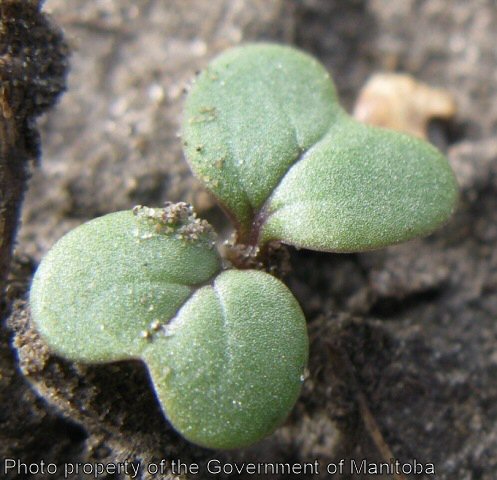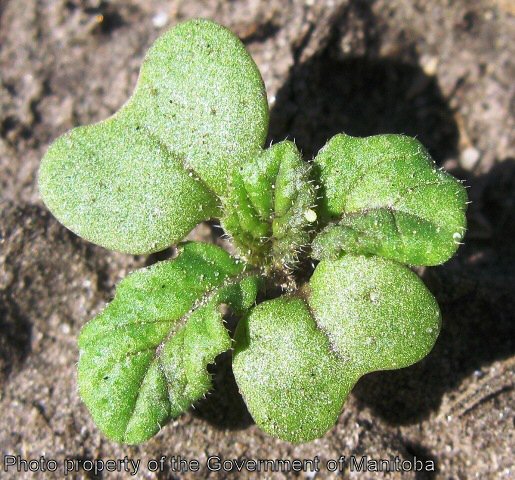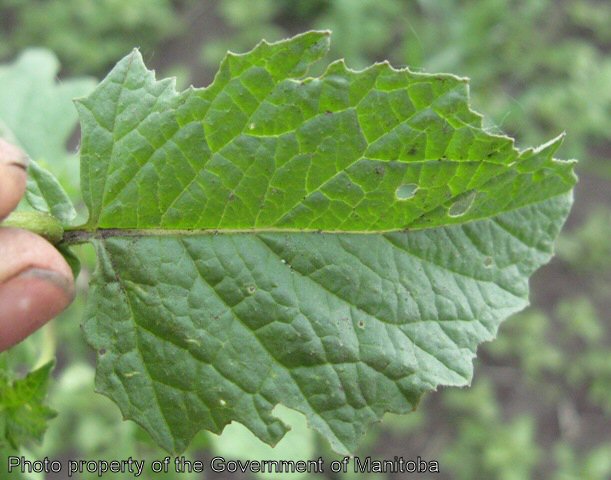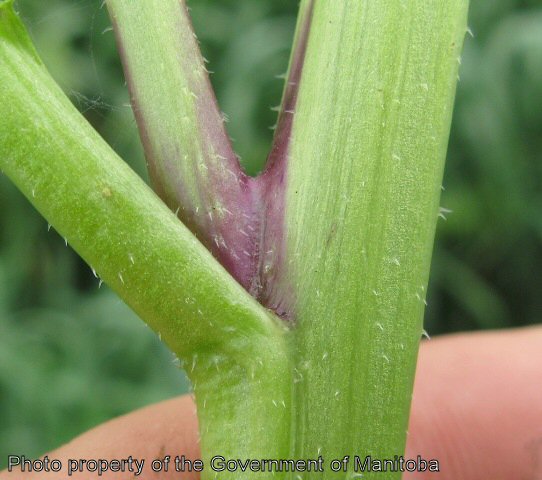Wild Mustard
 click to enlarge |
 |
 |
 |
 |
 |
 |
 |
Wild mustard can cause yield loss and is a serious contaminant of canola seed. If more than 5% wild mustard is present in a canola sample, the canola is graded "sample reject".
Biology
The branched stem is erect, about 1 m (3 ft.) tall, and has short, stiff hairs, especially on the lower part of the stem. The leaves are alternate and coarsely- toothed. Like canola, the flowers are bright yellow. Wild mustard has strong, downward-pointing hairs and is a much hairier plant than canola. Also, in canola, the upper leaves clasp the stem whereas, in wild mustard, the upper leaves have stalks.
As wild mustard matures, there is a purple colouring down the stem and close to where the leaf stems attach to the main stem. Wild mustard produces 2,000-3,500 seeds per plant. The seeds are brown to black and produce a gelatinous coating after soaking in water for a few minutes. Dry conditions early in the season tend to keep populations of wild mustard low.
Scouting Techniques
Take a minimum of 20 weed counts across the field. Wild mustard seedlings look very similar to Polish canola. Take plants confirmed to be Polish canola and wild mustard and compare them for subtle differences. Look between the crop rows when trying to identify wild mustard in Polish canola.
Effects On Crop Quality
Wild mustard seed is similar in size and shape to canola seed. It is impossible to separate by conventional methods. Densities as low as 20 plants per square metre (sq. yd.) in canola may result in wild mustard accounting for up to 5% of the harvested seed, the maximum tolerance of wild mustard in any grade of canola.
Threshold/Yield Loss
Wild mustard is highly competitive with wheat. Left unchecked, 10 wild mustard plants per 0.1 square metres (sq. ft.) can reduce wheat yields by 10-20 bushels per acre or 35%.
As few as 10 mustard plants per square metre (sq. yd.) can reduce flax yields by 25-50%. The threshold for wild mustard in canola is 3 plants per square metre (sq. yd.). With 33 plants per square metre (sq. yd.) in field peas, yields can be reduced by up to 65%, depending on seeding rates and row spacing. With 4-16 wild mustard plants per foot of row in sunflower, yields can be reduced by 25-30%.
Control Tips
Wild mustard flourishes under cool, moist conditions. Pay attention to weed staging under these conditions as it grows quickly and can escape the window for herbicide application. Herbicide options are available in most crops.

